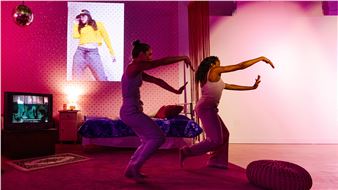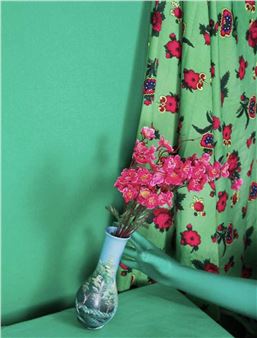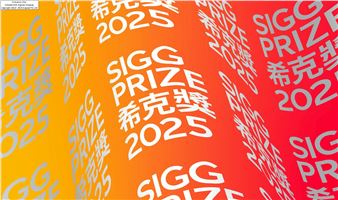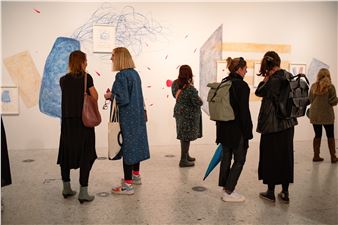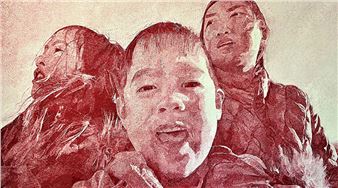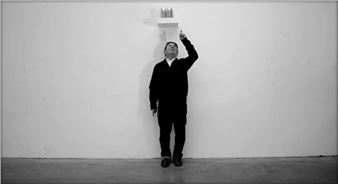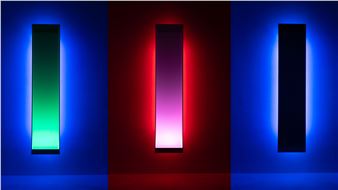Candice Lin: The Animal Husband
In her first solo exhibition in Scotland, Candice Lin brings together new and existing work to play with the University of EdinburghÔÇÖs former Natural History Museum as a site of corrupted encounters, transgressions and transformations. Queering human and animal relationships, Lin uses a vocabulary of crude, ambiguous and dreamlike imagery to expose the conceits surrounding the scientific categorisation and control of bodies, and its links to the construction of race, gender, animality and humanness.
The ceramic sculpture Piss Protection Demon will greet visitors with the smell of wolf urine, what merchants describe as ÔÇ£territorial deception scentÔÇØ used to ward off so-called pest-animals or provoke the curiosity of other predators. Examining narratives of dominance, wildness and masculinity, its cat body, human ears and an inverted wolf skull speak of possible metamorphoses, trans-species projections and desires. In the centre of the gallery, a kinetic screen showcases a new video featuring an animated version of the artistÔÇÖs cat, Roger, who philosophically ruminates on his relationship to Lin, the flesh lump that lives with him. He alludes to Thomas Granger, the first juvenile executed in the Plymouth Colony, during the early colonization of America. Roger narrates how Granger was given a death penalty for sex with animals and talks vividly about his own experience of castration, the draining of his ball juice being ÔÇô as he puts it ÔÇô and an ÔÇ£inevitable trading of power.ÔÇØ This links to LinÔÇÖs interest in Howard ChiangÔÇÖs study of eunuchs, where Western sexologists condemned what English soldier George Carter Stent (1833ÔÇô 1884) called in his influential but questionable account, the ÔÇ£unnatural proceedingsÔÇØ of castration. A cicatrix, the scar left after the removal of the penis, becomes a motif throughout the space: a symbol reappropriated from Western medical sources which sensationalized the practice as emasculating and debasing
A new series of intimate pewter sculptures hang from metal human-sized collars, suggesting non-normative reversals in the relationship between companion animals and their owners. The cast metal is surfaced on one side with a fleshy wax substance inscribed with wound-like images of feeding, embracing and more than friendly human and animal exchanges. LinÔÇÖs earlier work The Moon/Inside Out (2010) directly addresses William HunterÔÇÖs famous anatomical study of the Gravid Uterus, based on his dissections of pregnant women. LinÔÇÖs ceramic and mixed media sculpture implicates the viewer and the anatomical mode of observation in uncomfortable questions around intimacy and consent. Looking through the vagina to watch an animation, you are implicated within a self-reflective peep show that also references voyeuristic elements from the canon of male-centred Western art.
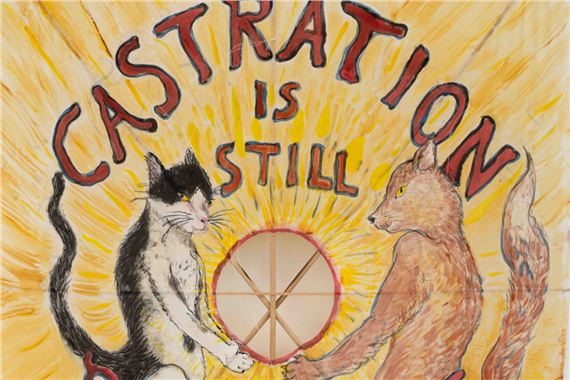
Recommended for you
In her first solo exhibition in Scotland, Candice Lin brings together new and existing work to play with the University of EdinburghÔÇÖs former Natural History Museum as a site of corrupted encounters, transgressions and transformations. Queering human and animal relationships, Lin uses a vocabulary of crude, ambiguous and dreamlike imagery to expose the conceits surrounding the scientific categorisation and control of bodies, and its links to the construction of race, gender, animality and humanness.
The ceramic sculpture Piss Protection Demon will greet visitors with the smell of wolf urine, what merchants describe as ÔÇ£territorial deception scentÔÇØ used to ward off so-called pest-animals or provoke the curiosity of other predators. Examining narratives of dominance, wildness and masculinity, its cat body, human ears and an inverted wolf skull speak of possible metamorphoses, trans-species projections and desires. In the centre of the gallery, a kinetic screen showcases a new video featuring an animated version of the artistÔÇÖs cat, Roger, who philosophically ruminates on his relationship to Lin, the flesh lump that lives with him. He alludes to Thomas Granger, the first juvenile executed in the Plymouth Colony, during the early colonization of America. Roger narrates how Granger was given a death penalty for sex with animals and talks vividly about his own experience of castration, the draining of his ball juice being ÔÇô as he puts it ÔÇô and an ÔÇ£inevitable trading of power.ÔÇØ This links to LinÔÇÖs interest in Howard ChiangÔÇÖs study of eunuchs, where Western sexologists condemned what English soldier George Carter Stent (1833ÔÇô 1884) called in his influential but questionable account, the ÔÇ£unnatural proceedingsÔÇØ of castration. A cicatrix, the scar left after the removal of the penis, becomes a motif throughout the space: a symbol reappropriated from Western medical sources which sensationalized the practice as emasculating and debasing
A new series of intimate pewter sculptures hang from metal human-sized collars, suggesting non-normative reversals in the relationship between companion animals and their owners. The cast metal is surfaced on one side with a fleshy wax substance inscribed with wound-like images of feeding, embracing and more than friendly human and animal exchanges. LinÔÇÖs earlier work The Moon/Inside Out (2010) directly addresses William HunterÔÇÖs famous anatomical study of the Gravid Uterus, based on his dissections of pregnant women. LinÔÇÖs ceramic and mixed media sculpture implicates the viewer and the anatomical mode of observation in uncomfortable questions around intimacy and consent. Looking through the vagina to watch an animation, you are implicated within a self-reflective peep show that also references voyeuristic elements from the canon of male-centred Western art.
Artists on show
Contact details

Related articles
Talbot Rice Gallery announces two exhibitions to open on March 16, 2024: Candice Lin: The Animal Husband.
This exhibition celebrates 150 years since the birth of John Duncan Fergusson (1874-1961), the longest-lived and most international of the pioneering group of artists known as the Scottish Colourists.
Situated in Talbot Rice GalleryÔÇÖs former natural history museum,┬áCandice LinÔÇÖs exhibition will open speculative conversations about how humanness, animality, race and gender have been shaped by histories of science.

 ARTISTS
ARTISTS







